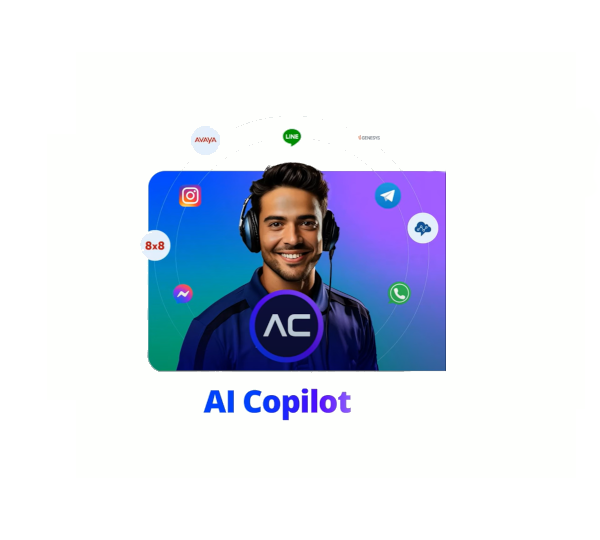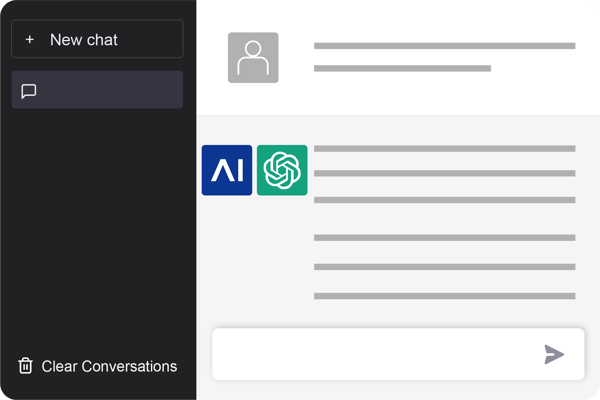Like all businesses, contact centers are under increasing pressure to do more with less. There is a need to reduce costs and possibly headcount, while at the same time contact volumes are increasing, customers’ problems are becoming ever more complex, and their expectations in terms of service are higher than ever.
Technology, in the form of AI, has long been thought to offer a solution to these challenges. So much so that it’s expected that 20% of customer service interactions will be handled by Conversational AI agents by 2022. The market for this technology is expected to grow from $4 billion to $15 billion by 2024.
In this article we are going to look at the capabilities of Conversational AI, the new possibilities it opens up for CX, the operational and business problems it helps solve, and some of the results companies are starting to see.
What are the possibilities opened up by Conversational AI?
Conversational AI is a core contact center automation technology powered by recent advances in Natural Language Processing and associated technologies such as speech-to-text and text-to-speech. Alongside that, cloud compute and storage enable huge amounts of data to be processed to perform functions like sentiment and intent analysis.
The result is that it is possible to develop artificial agents that can understand natural language, interpret intentions, and respond in much the same way a human would – only faster, more accurately, and for a much lower cost per interaction, particularly as they can handle almost unlimited numbers of them simultaneously.
This ‘superpower’ can be deployed on any channel and in any language. With access to the company’s CRM and other databases, including customer histories, a Conversational AI system can instantly tease out much more insight into likely customer behavior, even at the level of individual customers, than a human agent can.
Deployed as chatbots, voice bots, or intelligent self-help systems, and using the full range of contact center channels including voice, messaging, chat, push notifications, and SMS, a Conversational AI can take personalized customer service to new levels. Imagine a banking app that knows your habits and offers to complete routine transactions for you. Or a chatbot that can give you a personalized interest rate as you browse your bank’s website.
What operational challenges does AI solve?
When it comes to customer service and the customer experience, Conversational AI is being used in three different ways.
1. Assisting customers
The first is self-service for customers on web, mobile and voice channels. Generally in the guise of a chatbot or voice bot the AI system interprets customer queries and tries to respond in the same way a human agent would. If it cannot, there is generally an option to fail over to a live agent. This solves a number of operational challenges that help contact centers to meet their KPIs and ROI targets.
Firstly it provides 24/7 cover far more cheaply than rotating shifts of live agents ever could. It also enables high volumes of interactions, including peaks, to be managed consistently with every customer being answered almost immediately.
Even if the AI is only able to successfully respond to the less complex queries initially, this has a tremendous knock-on effect for the rest of the organization. By efficiently managing the most common and simple customer interactions only the more complex ones make it through to the live agent teams. This means they can take more time to provide detailed, personalized responses to those customers that are having real difficulties.
The upshot is increased satisfaction from those customers as the company went out of its way to help them. Furthermore agents also become much more satisfied with their jobs as suddenly, without all those routine queries, it’s much more interesting as every interaction represents more of an intellectual challenge.
2. Assisting agents

The second main use of Conversational AI in the contact center is to support live agents by providing a more natural user interface to the tools, systems, and information that agents need to conduct customer interactions.
Gartner estimates that already 40% of users are primarily interacting with new applications via so-called Conversational UIs (user interfaces). These work by monitoring the conversations – whether by voice or chat – the agent is having with a customer and intervening at appropriate times with relevant information, screens, or prompts.
Not only does this context-sensitive help mean agents don’t need to spend lots of time looking up information themselves, it also vastly reduces hold time and the need to transfer customers from one agent to another because of a knowledge gap. Additionally it allows agents to find answers much more quickly which reduces the length of interactions and increases first contact resolution rates. These are all known to be huge indicators of customer satisfaction.
That super-powered AI friend also becomes the agent’s most useful tool and dramatically improves the employee experience, leading to lower attrition rates while enabling the time it takes to train agents to a certain level of proficiency to be decreased.
3. Unlocking knowledge
Most organizations these days store an incredible amount of customer data, including information on transactions, past interactions, and even transcripts of calls and chat sessions. Much of this is in the form of unstructured data – such as verbatim comments – that nevertheless is incredibly valuable if it can be mined for insight.
Only an AI is capable of interrogating such a data store to cross-reference and find links between pieces of information that give new insight into customer behavior. A Conversational AI can do this on the fly by monitoring conversations – whether ones it is having itself or by listening in on agent interactions – and using sentiment and keyword analysis to understand how a customer is reacting, or predict what a customer wants.
When these two are brought together a Conversational AI can cross reference what a customer is saying now with what they’ve said in past interactions, with what other customers have said in similar situations and how they responded, and with other data locked in your databases. This gives it the power to anticipate how customer satisfaction can be maximized. It can then prompt the agent, if it’s a live interaction, to take a certain course of action or do so itself.
These three powers of Conversational AI combine to produce cost savings and efficiencies while improving service to customers and maximizing the potential value of every interaction. What’s more, as we’re talking about software in the cloud, these benefits can be achieved quickly and are scalable to any level and across any and all channels.
What are companies using artificial intelligence for?
Organizations such as Bank of America, Capital One, and American Express are using AI systems in all of the ways outlined above. Bank of America’s Erica is a customer representative who is contactable 24/7 by voice or text through the bank’s mobile apps. Eno is there to help Capital One’s app users manage their user settings and in this way it learns about customer behavior and feeds that information back to the app’s developers.
For most companies using Conversational AI, it’s currently in the form of chatbots. A recent survey suggested that 58% of executives believe chatbots are the only form of AI they are using effectively right now. Which shows that there is plenty of room for improvement still, and ample opportunity for forward-thinking organizations to steal a march on the competition.
Voice self-service, sometimes known as Conversational IVR, is the next most common use. Gartner predicts that customers will prefer to use a speech interface for 70% of self-service interactions by 2023, as opposed to 40% now. Conversational IVR differs from traditional IVR in that the customer issues commands and responses in natural conversational language rather than by pressing keys or responding in only limited ways. When done effectively it can be almost as fluid as a conversation with a human agent.
Elsewhere, Conversational AI technology is used to analyze and summaries the unstructured data in customer interactions in order to predict customer behaviors not just during ongoing interactions but in a more general sense. For example, a bank might use such a system to look for patterns in customer behavior and comments that generally lead to defaults. Predictive service can then be deployed to intervene with the customer to offer assistance even before any problem becomes apparent.
This type of predictive capability can also be used to speed up interactions and offer resolution more quickly by, for example, ensuring customers are routed to the most appropriate and knowledgeable agent to handle their likely query.
What are the results of deploying Conversational AI?
Companies that have deployed one or other of the technologies discussed above have reported impressive results. These include cost savings of up to $5.50 per concluded conversation, reduced handle time of 10% for interactions that were managed by agents assisted by a chatbot, and savings of $7.75 for each call that was correctly routed.
The use of AI to manage the more routine interactions – balance queries, password resets, and so on – has also been shown to cut costs by up to 30%. Self-service via AI is one of those rare win-win situations where cost reduction, customer preference, and improved customer satisfaction all go hand in hand. Employee experience is also improved which leads to lower attrition rates. Training costs are slashed when human agents are assisted by Conversational AI.
The task of a contact center is ultimately to provide customers with information or resolutions to problems in a timely and effectively manner. Whether that response comes via a chatbot, voice bot, some other self-service system, or an AI-assisted human agent does not matter so much to customers. The trick is to enable the agent – whether human or AI – to find the right data to answer the customer as quickly as possible. That is where the power of Conversational AI really lies.
Interested in understanding further? We recommend you to read the How Conversational AI Works section of our Essential Guide to Conversational AI.

.png?width=60&height=60&name=AI%20Copilot%20logo%20(mega%20menu).png)




.png?width=600&height=600&name=Knowledge%20AI%20Feature%20image%20(2).png)













